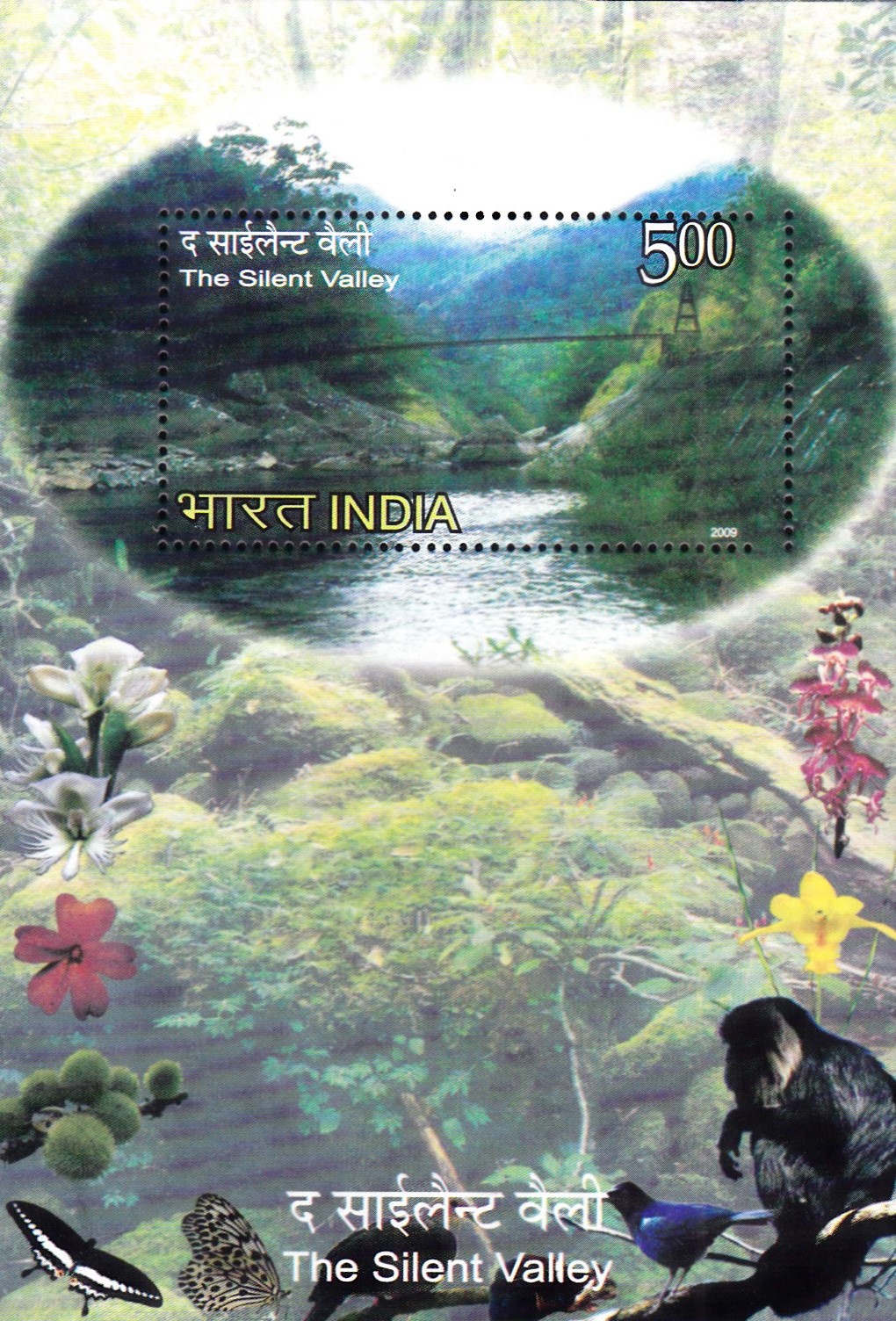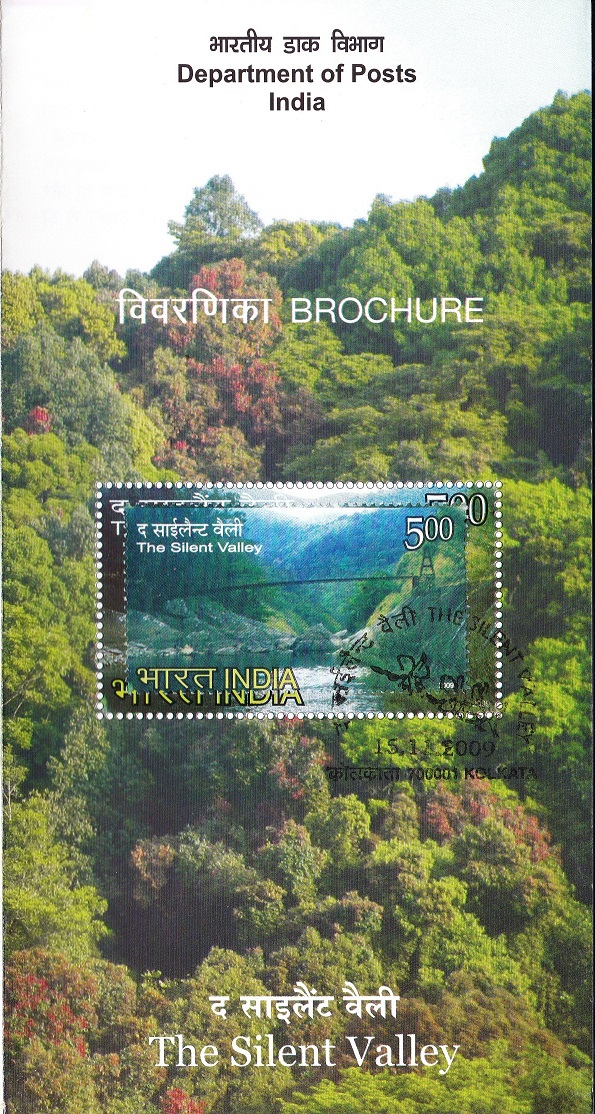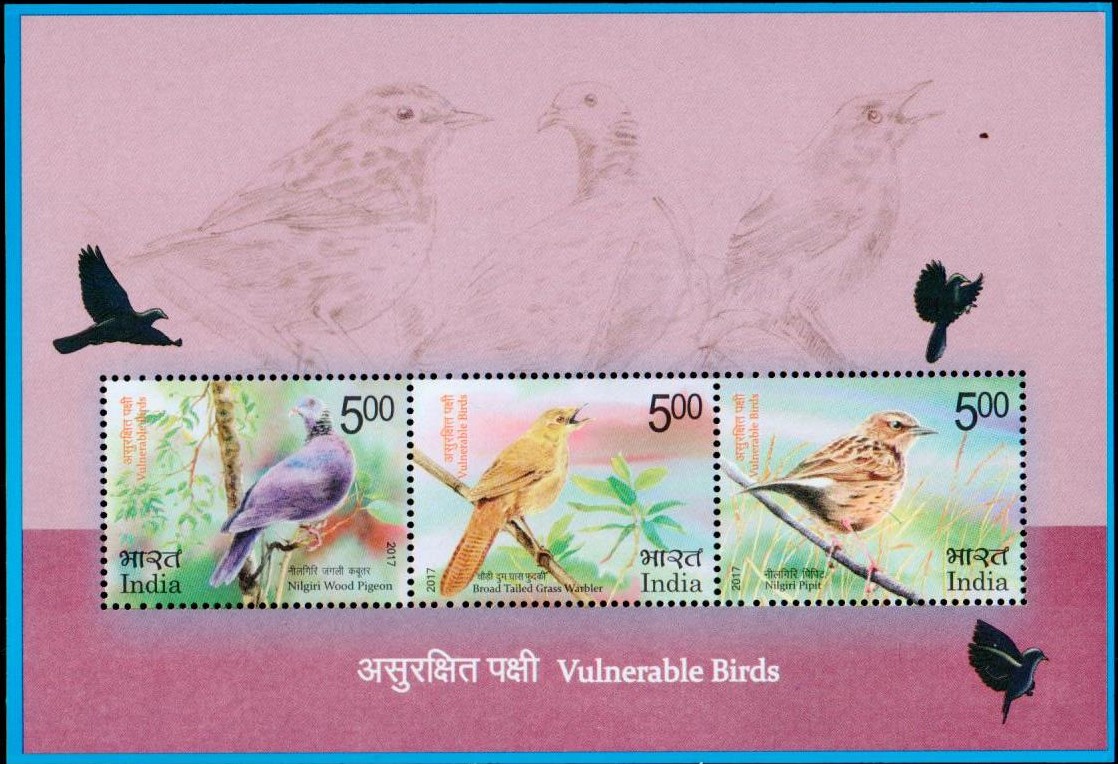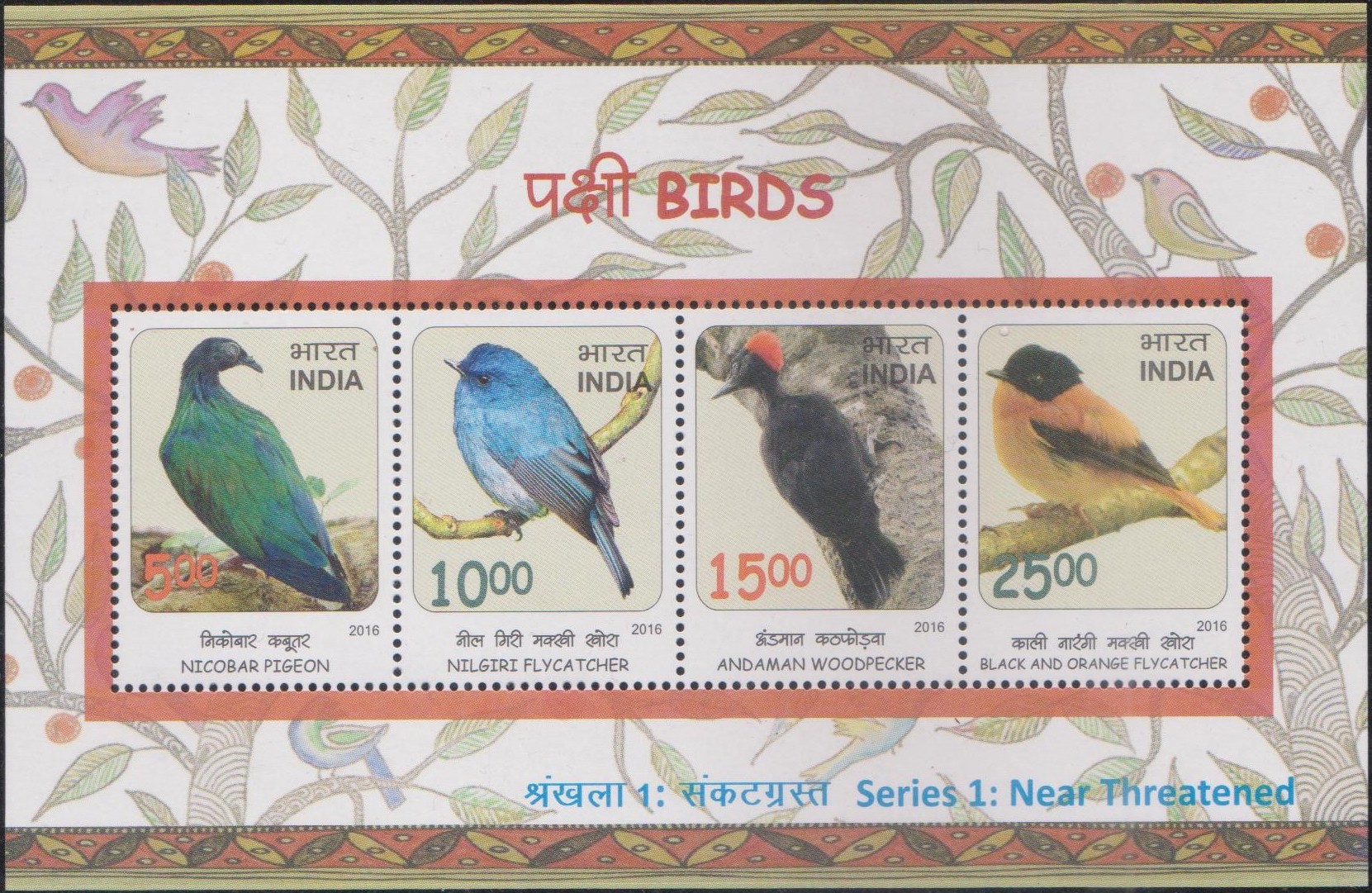
The Silent Valley
A Miniature Sheet consisting of 1 no. of commemorative postage stamp on the Silent Valley National Park, Nilgiri Hills :


 Issued by India
Issued by India
Issued on Nov 15, 2009
Issued for : The Department of Posts is proud and happy to issue a postage stamp to commemorate the 25th year of dedication of Silent Valley as a National Park.
Credits :
Stamp & FDC : Suresh Kumar
Cancellation : Alka Sharma
Type : Miniature Sheet, Mint Condition
Colour : Multi colour
Denomination : 500 Paise
Stamps Printed : 3.0 Million
Miniature sheets : 0.4 Million
Printing Process : Wet–offset
Printer : Security Printing Press, Hyderabad
About :
- The Silent Valley, situated in South Western Ghats, is one among the world’s ten “Hottest Biodiversity Hot Spots” and is believed to be the sole surviving bit of virgin tropical rain forests in India. Located about 80 km north east of Palakkad, Kerala, the 8952 sq km forest was declared a National Park on 14th November 1984 and now it forms part of the core of Nilgiris Biosphere Reserve.
- The Silent Valley forests go back beyond history to reflect the mythological past of India. It is reflected in the names still current : Sairandhrivanam, the alternate name of the forests derived from Draupadi‘s name and the Kunthi River named after the mother of the Pandavas.
- The evolutionary age of Silent Valley, the evergreen rain forests, is believed to be more than 50 million years. This is a cliff forest cut off on all sides by steep ridges and escarpments. The topographic isolation of Silent Valley has prevented human habitation, allowing the forest to remain untouched and to emerge as an ecological oasis, preserving the flora and fauna. It is not clear who named it the “Silent Valley”. It is believed that the name owes Its origin to the relative absence of the cicadas which normally provide a distinctive sound in the forest environment.
- The flora of the Valley includes about 1000 species of flowering plants, 107 species of orchids that include rare, endemic and endangered forms, 100 species of ferns and fern allies, 200 liverworts, 75 lichens and about 200 algae. The orchids spring amidst the vegetation, from tree trunks and from crevices of rocks. They bloom in an abundance of colours and shape. Ipsea Malabarica – an endemic ground orchid which has been lost and found after one and quarter century, is a testament to excellent forest conservation values.
- This valley is home to 23 mammalian species including three endangered ones: the tiger, the lion tailed macaque and the Nilgiri langur. Other than the elephant, lion tailed macaque, Nilgiri langur, common langur, Nilgiri tahr, tiger, leopard, sloth bear, Gaur, wild dog, etc., The Silent Valley is home to birds, reptiles, amphibians, fishes and insects whose variety and profusion is an enduring delight – the colour and abundance virtually impossible to capture or recreate through brush and paint or on camera in its entirety.
- The rich and virgin forest underwent a tumultuous phase in its history during 1977-80 when the Silent Valley Hydroelectric Project (SVHP) was proposed. This project would have submerged 830 hectares of forest. The struggle that followed to preserve the forest was perhaps one of the most successful stories of protection of the environment, capturing the imagination of writers, artists, scientists, politicians, nongovernmental organisations, media and the public alike. It became an irrepressible people’s movement which resulted in saving the Silent Valley and led to the declaration of the Silent Valley as a National Park by Mrs. Indira Gandhi, the then Prime Minister in 1983. Today it is a symbol of a people’s campaign for conservation, “the flagship of ecological arid environmental awakening in India“.
- Dr. Salim Ali observed that “Silent Valley” is not just an evergreen forest, it is a very fine example of one of the richest, most threatened and least studied habitat in earth.
- Silent Valley exudes a quiet grandeur and exuberance of life. In her heart many songs lie in a deep silence. Silent Valley, indeed, is a poem on earth and much more. It is a banner to carry the environmental conscience ahead.
- Text : Based on the material provided by the proponent.








[…] This species has a small, fragmented, declining range and population as a result of the clearance and modification of grasslands. It therefore qualifies as Vulnerable. This Bird is endemic to the Western Ghats, India, where it is known from Maharashtra, Andhra Pradesh, Karnataka, Kerala and Tamil Nadu. Large, plain warbler with whitish underparts and broad, rounded tail. Rufescent-brown upperparts when breeding, but colder and greyer when plumage worn. Faint, dark cross-bars on tail and narrow, pale supercilium that extends to just behind eye. It inhabits dense, tall grass and reeds, interspersed with patchy scrub and bushes on open hillsides, sometimes on steep slopes, but particularly marshy or damp depressions around hilltops, at 900-2,000 m. It also occurs in dense screw pine swamps, lemon grass and dwarf dates and at the edges of forest. This species is threatened by the mismanagement of native shola grasslands, as these habitats are little valued and many areas have been planted with exotic tree species. It is known to occur in several protected areas, including Bramhagiris Wildlife Sanctuary, Aralam Wildlife Sanctuary, Eravikulam National Park, Periyar Tiger Reserve, Kalakkad-Mundanthurai Tiger Reserve, Neyyar Wildlife Sanctuary, Peppara Wildlife Sanctuary and Silent Valley National Park. […]